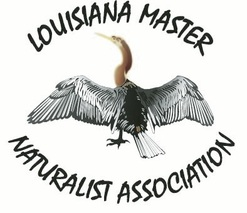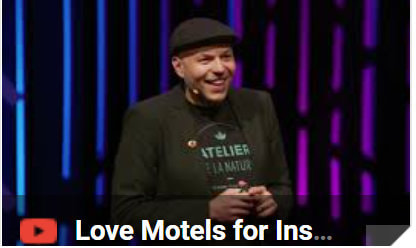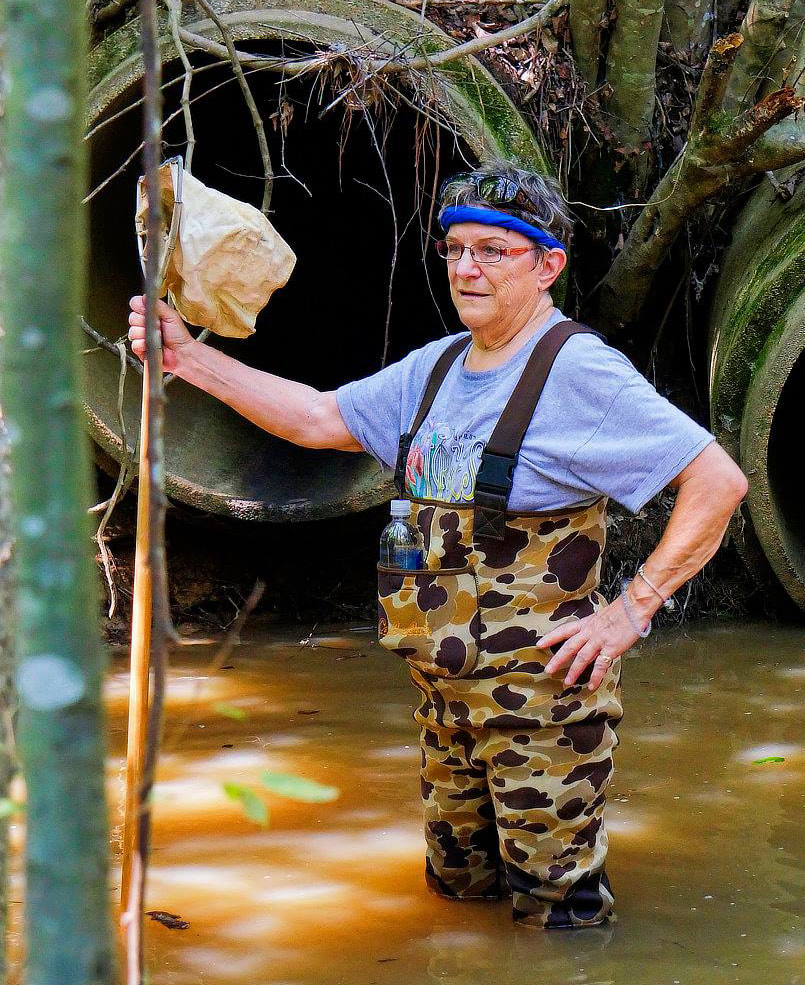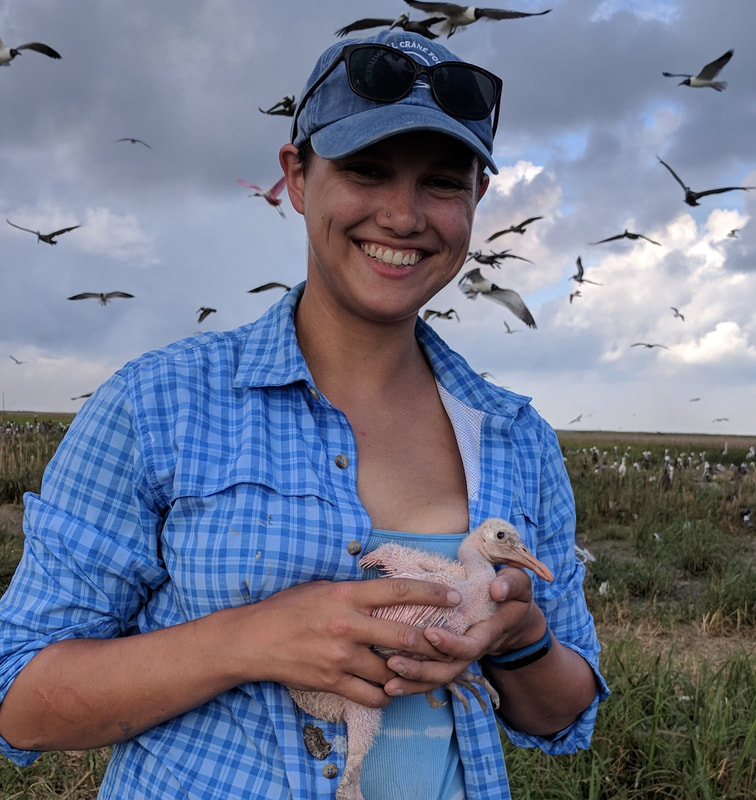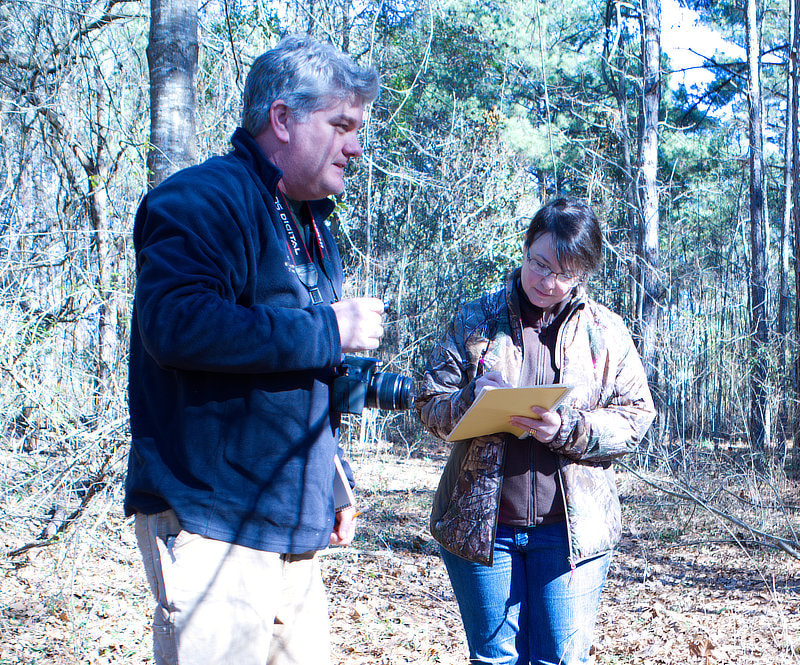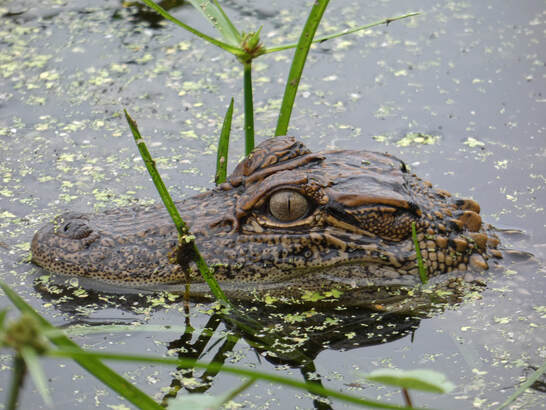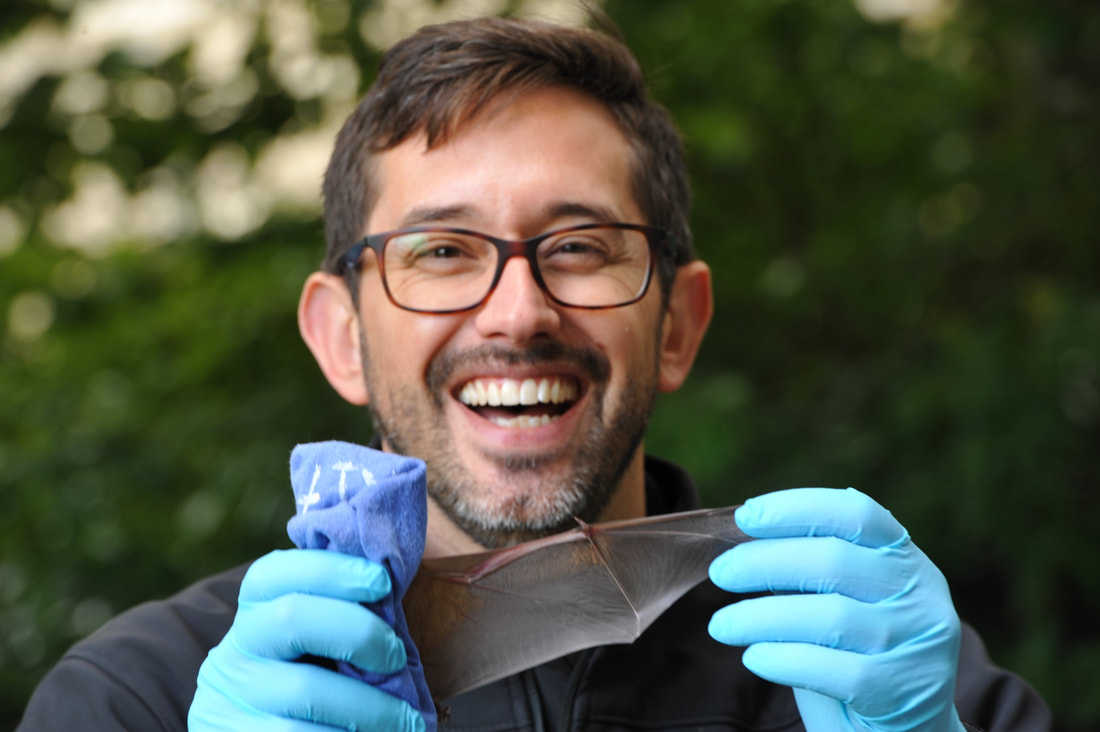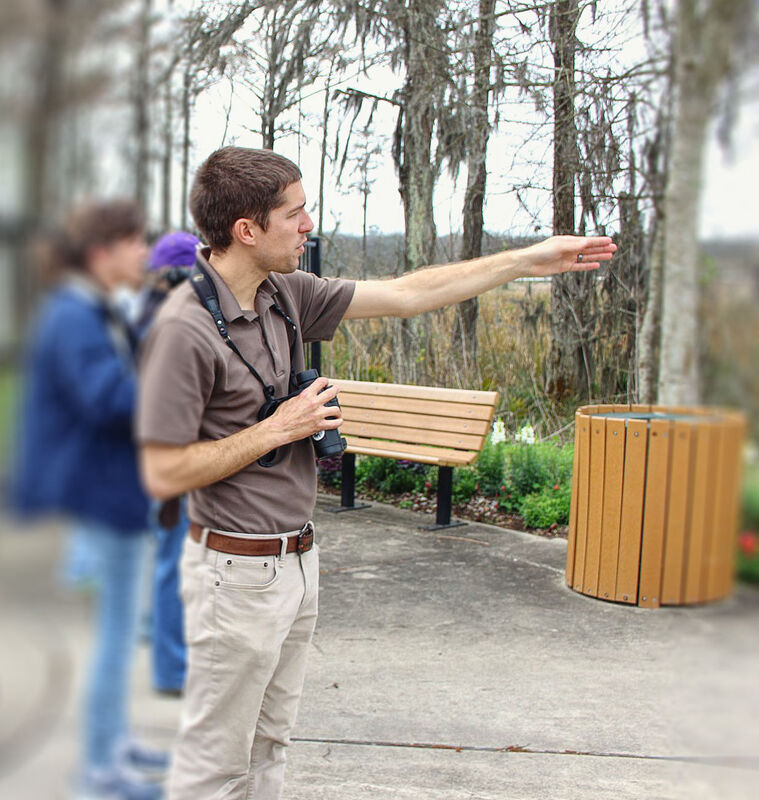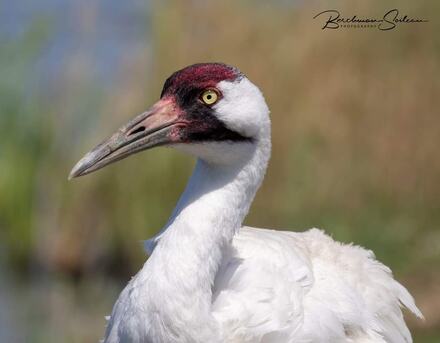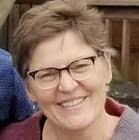|
Brandon Ballengée (American, born 1974) is a visual artist, biologist and environmental educator based in Arnaudville, Louisiana. "We stand guard over works of art, but species representing the work of aeons are stolen from under our noses" -Aldo Leopold |
"The Age of Loneliness"
|
|
Dr. Brandon P. Hedrick is an Assistant Professor of Anatomy at Louisiana State University’s Health Science Center in New Orleans.
Hedrick's main research interests focus on understanding how ecology, morphology, and phylogeny are interconnected. He is an evolutionary ecologist, specializing on mammals and herpetofauna, and is particularly interested in how novel anthropogenic environments are impacting morphological characteristics of animals and how those environments affect dispersal of animals. |
Making Bat Houses |
Camp Hardtner: 100+ Years of Restoration
Bette J. Kauffman PhD
|
Dr. Bette J. Kauffman co-founded the Louisiana Master Naturalist – Northeast chapter , runs its website and is its current president. She also serves as Vice-president of our state group and represents the chapter on the statewide Board. Kauffman is a Professor Emerita of Communication at University of Louisiana Monroe and a photographer whose work appears in local, regional and national juried art exhibits. Read her Edge & Essence Phtography Blog
“Camp Hardtner: 100+ Years of Restoration” was Kauffman's interpretive project for her Master Naturalist certification. It incorporated research that she has done as part of assessing Camp Hardtner for the Louisiana Department of Wildlife and Fisheries Natural Heritage program. Camp "Hardtner: 100+ Years of Restoration is a PowerPoint overview of nearby Camp Hardtner, including its natural history dating from the late 19th Century to the present, with assessment data and maps showing interesting areas of the 180 acres for field trips. |
Dr. Kauffman assessing Brandywine Creek during the Watershed Dynamics workshop in 2018
|
Karis RitenourKaris Ritenour is a conservation biologist at Manomet, a nonprofit conservation organization working throughout the Western Hemisphere to protect shorebirds and the habitats that they rely on.
In addition to working closely with the Natural Resources Conservation Service to provide technical and financial support to farmers, Karis works with government agencies, researchers, and other nonprofits to build capacity to protect, promote, monitor, and study shorebirds in Louisiana. Karis holds a M.S. in Renewable Natural Resources from Louisiana State University. |
Louisiana's Natural Area Registry and Natural Heritage Program with Chris Doffit
|
Louisiana Wildlife and Fisheries Botanist Chris Doffit with Louisiana Master Naturalist Kimmie Paxton at Crawfish Springs private nature reserve, near Antioch, Louisiana.
|
Chris Doffit, Louisiana Wildlife and Fisheries Field Botanist and Natural Heritage Program Coordinator will explain Louisiana's Natural Area Registry and Natural Heritage Program!
So far, program staff have compiled more than 10,000 occurrence records of rare, threatened, and endangered species, unique natural communities, and other distinct elements of natural diversity and identified more than 350 ecologically significant sites statewide. This is particularly significant for us now, because we are going to be helping provide data to assist with the assessment of Camp Hardtner. |
American Alligator Success Story with Dr. Bob Thomas
Bat Detection with Teague O'Mara!
Teague O'Mara is an Assistant Professor and the Dyson Professor of Biological Sciences at Southeastern Louisiana University. His Integrative Movement Ecology research group studies the strategies that long-lived animals use to compensate for unpredictable environments -- from regulating heart beats to foraging with social group members to long-distance migration.
His group uses a wide range of bio-logging techniques to measure the movements of animals, especially bats, and how they use their environment!
Join Teague for some bat detecting on Saturday night!
His group uses a wide range of bio-logging techniques to measure the movements of animals, especially bats, and how they use their environment!
Join Teague for some bat detecting on Saturday night!
Louisiana's Whooping Cranes: How You Can Help Them Thrive
|
Image above shows Irvin leading a birding hike in Lake Charles area.
Image right shows how impressive Grus Americana can be when seen close-up! |
Irvin Louque was the founding president of the Southwest Louisiana Master Naturalists, he is now International Crane Foundation Whooping Crane Outreach Coordinator for Louisiana and will teach us how to be Crane Ambassadors!
In previous Rendezvous events, Louque has helped train our naturalists in digital citizen science platforms to keep track of our observations. In this talk, Irvin will tell us about his work with Louisiana's avian mega-fauna! The Whooping Cranes. Louisiana's Whooping Cranes: How You Can Help Them Thrive |
Charles Allen PhD
|
Dr. Charles Allen makes botany fun! His classes and emails are lively, engaging and factually rich. He's a prolifically published academic author and expert on the wetlands and woodlands of Kisatchie National Forest and surrounds!
Dr. Allen is currently compiling a species list of moths at his registered protected area at Allen Acres, near Pitkin, Louisiana.
|
Dr. Charles Allen is a Botanist and a retired Professor of Biology from the University of Louisiana at Monroe and also retired from Colorado State University’s Center for Environmental Management of Military Lands.
In recent years, he offers plant id classes at home and on the road and also teaches master naturalists' programs as well as presenting programs on edible plants, wildflowers, native plant landscaping, and butterfly gardening. He and his wife Susan own and operate Allen Acres B&B, a nature oriented paradise in west central Louisiana where he organizes and leads many area field trips. Allen Acres on Facebook |
Dr. Phyllis Baudoin Griffard is a biology educator. Her scholarly work has aimed to make biology meaningful to learners of all ages, especially that in their own backyards. Phyllis is Vice-President of the Acadiana Native Plant Project and coordinator of Louisiana Native Plant Society's Louisiana Certified Habitat Program. Phyllis, Pete, and hundreds of species of birds, insects, herps, and mammals live on 7 acres of gold-certified habitat in Sunset, Louisiana.
Education and Outreach and Vice-President Acadiana Native Plant Project
Coordinator of LNPS Louisiana Certified Habitat Program for Southwest Louisiana
Program Committee, Acadiana Master Naturalists
Education and Outreach and Vice-President Acadiana Native Plant Project
Coordinator of LNPS Louisiana Certified Habitat Program for Southwest Louisiana
Program Committee, Acadiana Master Naturalists
Louisiana Black Bears with Paul Davidson
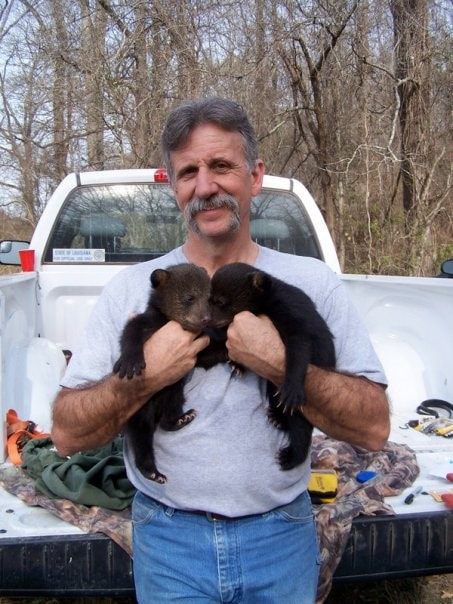
Paul Davidson with Louisiana Black Bear cubs BBCC image and copyright.
|
Paul Davidson has been the Executive Director of the Black Bear Conservation Coalition since January of 1992. He oversees recovery efforts for the federally threatened Louisiana black bear in its historic range in Louisiana, Mississippi, southern Arkansas, and east Texas. This includes education and outreach, research, conflict management and management of habitat and populations, and how to fund all of the above.
He received a Bachelor of Science degree in Zoology from Southeastern Louisiana University and did post graduate work at Louisiana State University. He worked as a Research Associate at LSU before entering into private business for several years. During that period he was very active in conservation advocacy roles, serving in leadership positions in several conservation organizations including the Louisiana Wildlife Federation and the Coalition to Restore Coastal Louisiana. He has served on several commissions and task forces under three Louisiana governors, and state and federal agencies. http://www.bbcc.org/la-black-bear/ |
